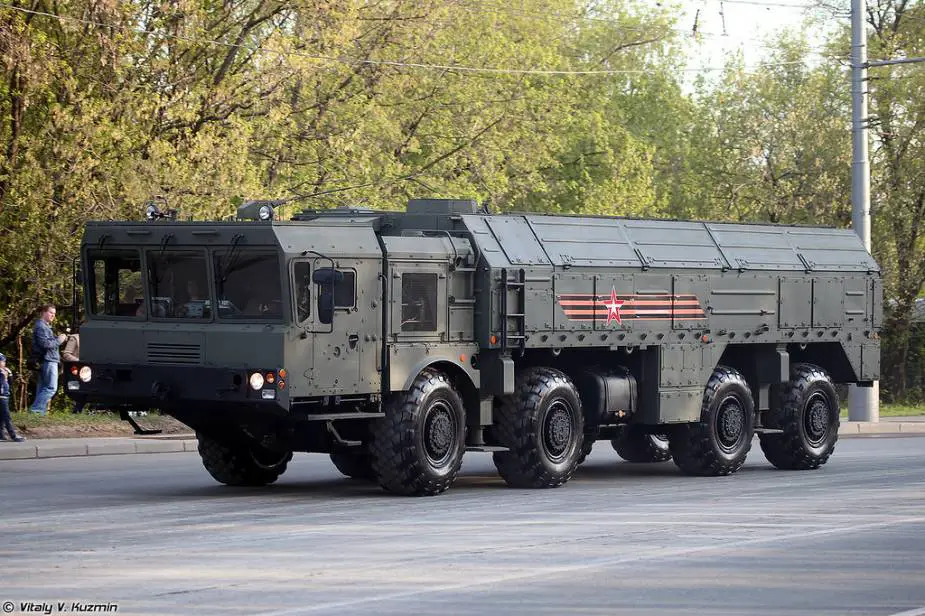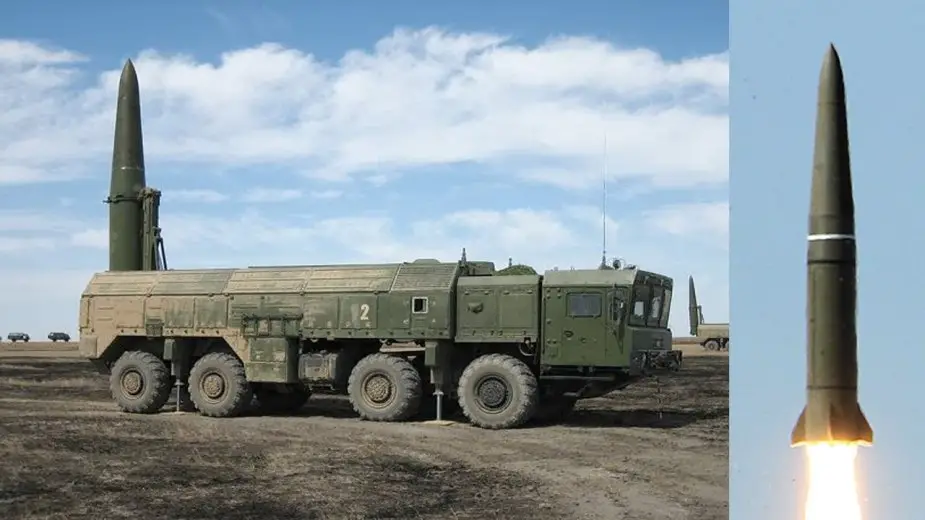Iskander-M operational-tactical launchers received a new missile. It is a stealth weapon that maneuvers to create additional problems for air and missile defense. The new missile was for the first time engaged at a 2020 exercise, the Izvestia daily writes quoting Defense Ministry sources. They said the creation of the missile began in 2016. It is currently in a high state of readiness. The missile was tested in 2020 at Kapustin Yar range during an exercise of missile and artillery forces.
Follow Army Recognition on Google News at this link

9P78-1 TEL Iskander-M (Picture source: Vitaly Kuzmin)
The new Iskander-M missile is coated with radio-absorbing materials, is highly maneuverable, and can destroy targets at a distance of 500 kilometers. The missile belongs to the air ballistic class. “The new weapon is likely a development of 9M723 air ballistic missile, which has been engaged by Iskander-M for several years,” expert Dmitry Kornev said. “The form of the body and nose had to be upgraded and new materials used to decrease the radar signature. The controls have likely changed as well, as super maneuverability is reported,” he said.
Several years ago Designer General of the Machine-Building Design Bureau (KBM) Valery Kashin said new missiles were designed for Iskander-M, which can fire both ballistic and cruise missiles. The round of Iskander-M munitions currently includes five ballistic and two cruise missiles. They allow destroying various targets and the strike is difficult to repel by available air and missile defense. “Quasi ballistic missiles can maneuver and are guided during the whole flight,” Kornev said.
Modern Russian and foreign air and missile defense can intercept ordinary short-range ballistic missiles. Iskander missiles were designed for unpredictable maneuvering with 20-30 overload to complicate interception. The missiles are universal and can carry various warheads: high-explosive, fragmentation, piercing, cluster. There is also a nuclear warhead. Iskander-M missiles can self-guide by the radar or optical image. The missile itself adjusts the trajectory at the final stage of the flight.
Upgraded missiles have been designed for Iskander-M since it was accepted into service. In 2019, the United States said 9M729 cruise missile exceeded the 500-km range restricted by the INF Treaty. Washington used the accusations as a pretext to withdraw from the INF.
The Russian military said 9M729 has a range of 480 km that is within the INF limits. It differs from the previous 9M728 by a higher power warhead and upgraded guidance system.

Iskander-M launcher and missile in initial variant (Picture source: Youtube)
© Copyright 2021 TASS / Army Recognition Group SPRL. All rights reserved. This material may not be published, broadcast, rewritten or redistributed.














